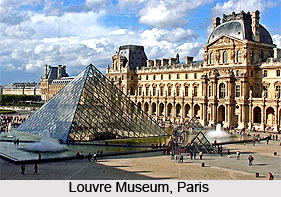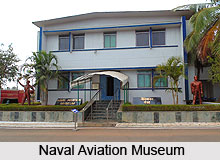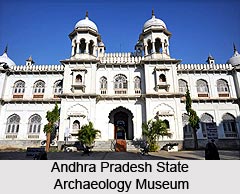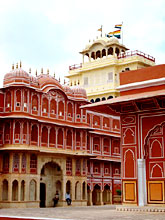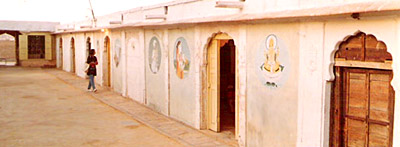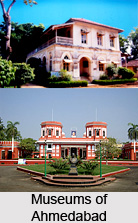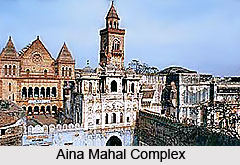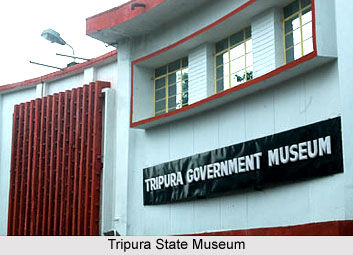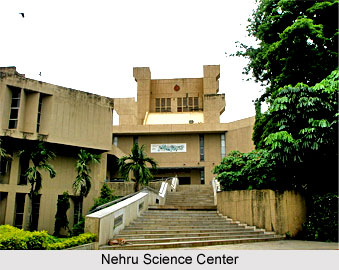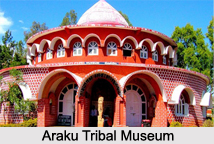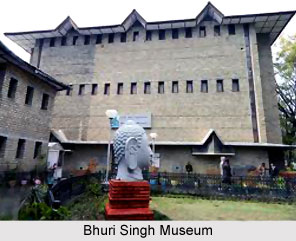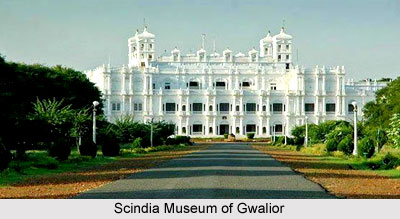The district archaeological museum in Nizamabad district was established due to the initiative taken by the District Collector of Nizamabad district. The town hall in Tilak Garden was selected as the premises for the same. The ground plan of the Town Hall is in a`t` shape with rectangular halls. It had originally been constructed in the year 1936 by Nizam VIIth, Mir Osman Ali Khan. The archaeology department deputed it staff and with in short span of 2 weeks the museum was set up, after doing electrification works, pedestals for sculptures, showcases for bronzes etc. Many archaeology important items have been displayed in the museum.
The District Archaeological Museum was finally made open to the public on the 10th of October, 2001. It exhibits a number of artefacts and antiquities representing the evolution of human civilisation right from Paleolithic to Vijayanagar times (16th A.D.)
The Museum is broadly divided into three sections namely
1. Archaeological section,
2. Sculptural gallery, and
3. Bronze and Decorative gallery
The Archaeological section includes tools of Paleolithic, Neolithic and late stone age times, (Microlithic) 50000 to 5000 B.C.; megalithic pottery and iron implements datable to 1000 B.C. to the 3rd century B.C.; early historic cultural material of Satavahana times, includes, pottery, Iron implements, beads, bangle pieces, terracotta and brick datable to 2 Century BC to 2nd Century AD; Coins housed in the Museum ranges from punch marked varieties (3rd -4th Century BC to British period).
A hoard of Gold coins of Vijayanagar period unearthed at Bodhan is also on display.
The collection mainly includes coins of Satavahana dynasty, Ikshvakus, Vishnukundins, Kakatiyas, Qutab Shahi dynasty, Vijayanagara, British period etc., along with Quran Shariff datable to medieval period. A chart showing the evolution of the Telegu script from the 3rd century B.C. uptil the 16th century A.D is also displayed at the museum.
The Sculptural gallery includes sculptures of different Dynasties right from early Chalukya dynasty, Rashtrakuta dynasty, Kakatiya dynasty and Vijayanagar kingdom (16th & 17th Century AD) which are on display. The important sculptures include Jaina, Parsvanath, Ganesha, Veerabhadra, Chamundi, Hero Stones, Secular, Sculptures, Chennakesava, a Sculptural Panel depicting Ganga, Yamuna, Saraswathi. A finely carved Door Jamb in Red sand stone of Vijayanagar period is erected in front of Museum.
The Bronze and Decorative section includes Bronzes of different period from Chalukyas to Vijayanagaram times. Decorative Arts are the Bidiriware, porcelain and enamel ware. The important objects which are on display are Arms and Armour, which include swords of different types with gold inlay work, shields, chest plates, arrows, curved swords, daggers etc. belonging to Qutab Shahi and Asif Jahi periods. The district police official donated sum of the ancient swords, spears and guns of single and double muzzle type are also on display.
The painting on display is miniature paintings of medieval period and also of contemporary period.
1) Bidriware Collection in Nizamabad Museum:
The art with silver is called Bidriware, so called due to the name of the old town of Bidar. A thousand years ago the craft was brought down to India by migrants from Iraq Original home of this work seems to Iran. It travelled to Ajmer in Rajasthan through a noble man Khwaja Mohinuddin Chisti from Iraq, later came down to Bijapur.
The art was developed in the following centres:
Bidar (Karnataka)
Mushirabad (West Bengal)
Lucknow (Uttar Pradesh)
Purniah (Bihar)
Hyderabad (Andhra Pradesh)
The bidri articles displayed in the Museum are- Huqqahas, Spittons, Pandan, Flower vases, Betel Nut Boxes etc. and other varieties of items. All these artefacts have been brought from Hyderabad by the Dept. of Archaeology & Museum by the request of the Collector, Nizamabad.
2) Arms & Weapons Section in the Nizamabad Museum:
Several kinds of armour were known in the ancient world and were widely used by the Roman, Persian, Russian and Indian Armies during the medieval period. The following arms and weapons are displayed: Persian Indian swords, daggers, chest plates, lances, spears, suns and arrows with damascening (inlay of gold work) workman shop, offensive weapons like spears, the lances, the axes and heavy swords with double edged flat blades. All these weapons were used by the Golconda Nawabs during the medieval period. It was generally called the Deccan steel. The main ore was obtained from the Kunasumudram, Nirmal and Nizamabad. Deccan steel never rusts and always shines like crystal. Deccan steel was so famous that the pyramids of Egypts were drilled with the Deccan steel. This fact was mentioned by the Pliny the historian in B.C.
Coins, Manuscript like the Holy Quran, Stone - Sculptures, Pre-history objects, Early history, Paintings modern, Miniatures painting are also in the display in the Museum at Nizamabad.
